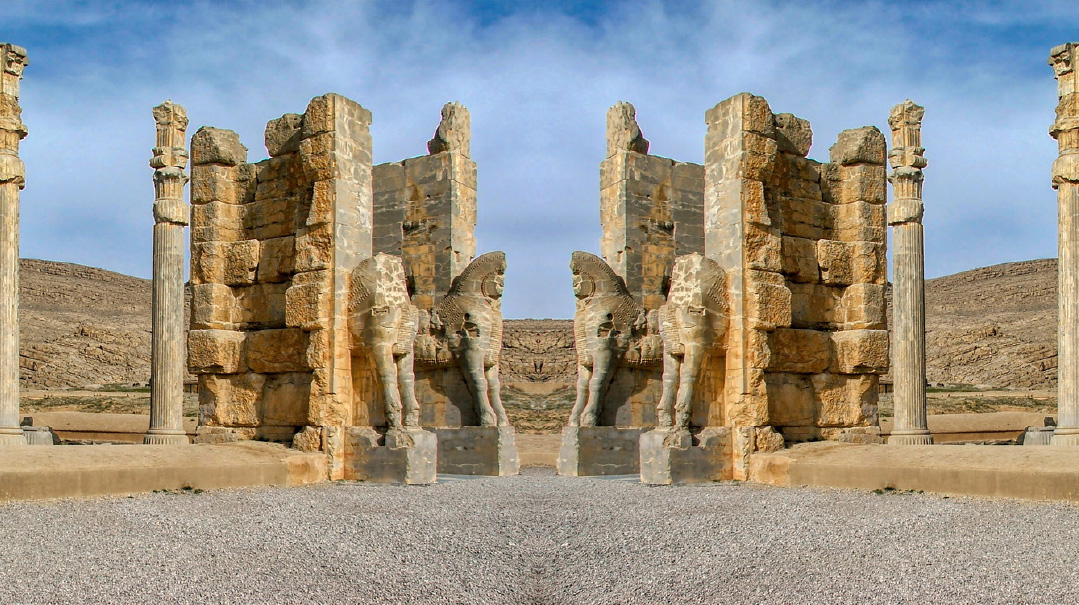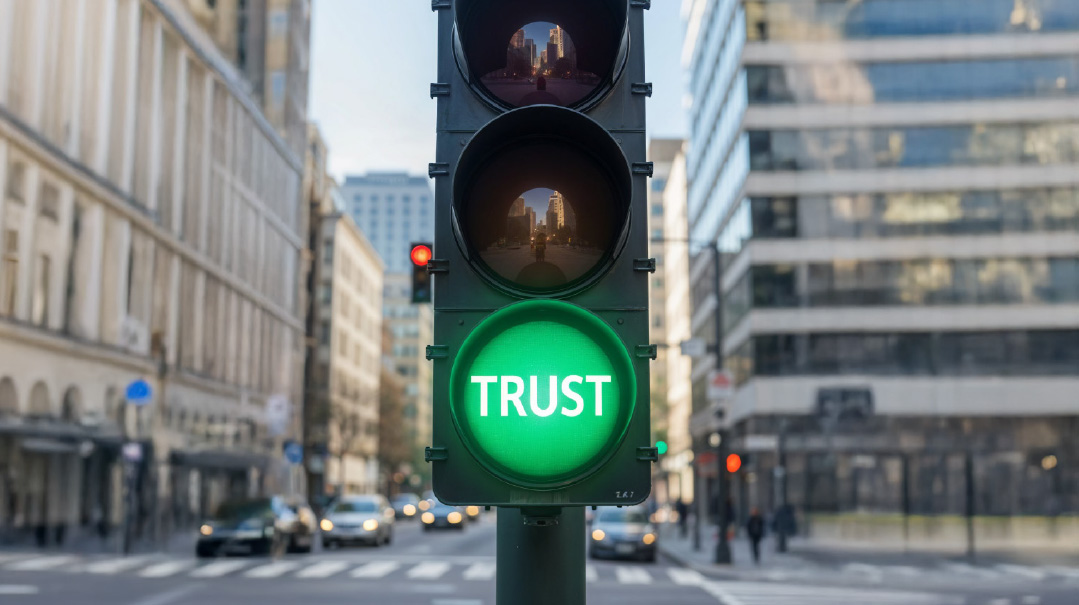Iran and the End of Days
| November 6, 2024Fascinating Torah prophecies are unfolding before our eyes

What is the Torah perspective on the current events with Iran? Are the Iranians really genocidal? Do they truly have nefarious intentions to develop nuclear warheads? To fully understand these issues, it’s important to trace their origins and development. This will show us how fascinating Torah prophecies are unfolding before our eyes.
The histories of Babylonia and Persia (modern-day Iraq and Iran) may be traced to postdiluvian civilization. Noach’s sons, Shem, Cham, and Yafes, were bequeathed distinct Divine missions after the Flood. While some of Cham’s descendants were cursed to be slaves, Yafes’s descendants were assigned a twofold objective — to be custodians of the physical world, ruling as monarchs and developing aesthetics; and to act as the facilitators and catalysts for the spiritual ascendancy of Shem’s progeny. Shem’s descendants, meanwhile, were charged with being the world’s spiritual and moral beacons.
Ancient civilization lived in relative harmony until Nimrod, Cham’s grandson, unilaterally crowned himself monarch, an act of brazen usurpation. Nimrod appropriated Yafes’s role and established an empire in Babylonia. According to Rashi, Seforno, Rokeach, and others, Shem’s grandson Ashur protested this illegitimate seizure of power, and left Mesopotamia.
Millennia later, Nimrod’s eventual successor in Babylonia was none other than Nevuchadnetzar II, who destroyed the first Beis Hamikdash. Almost two hundred years before the destruction of the First Temple, Yeshayahu Hanavi prophesied that a descendant of Yafes, a Persian king named Koresh, would supplant Babylonia as the major world power, restoring Yafes’s natural rights to the world monarchy. Yeshayahu further astoundingly prophesied that Hashem would commission this Koresh, a non-Jewish king, to redeem the Jewish People and rebuild the Beis Hamikdash. Yeshayahu’s words proved accurate — Babylonia was destroyed, Koresh ruled the known world, and the Jews were redeemed from exile.
There was one critical problem: Only 42,360 Jews returned to Israel. The rest stayed in exile. Koresh did not do enough to facilitate the Jewish redemption, nor did he completely rebuild the Temple. Fearing the Jews might rebel, Koresh ordered that sections of the Temple be constructed of wood so the Temple could easily be burned to cinders. Alas, Noach’s blessing and charge to Yafes would not be fulfilled through Koresh the Persian. Instead, Yafes’s illustrious legacy would be assigned to his other offspring, Greece, and eventually, Greece’s successor and Persia’s archnemesis: Rome.
Not only did Persia (modern-day Iran) forfeit its position as Yafes’s spiritual heir, it also attempted to destroy the Jews. Only a short while after Koresh, Haman, viceroy of ancient Persia, plotted to annihilate the Jews. As the Zohar teaches, history must always come full circle. Therefore — in the End of Days — kings and nations will be reincarnated and Persia will threaten the world and, in particular, the Jews.
The Gemara in Avodah Zarah 2b states, “d’hanach mashchi b’malchasaihu ad d’asi Meshicha” — There are two nations whose kingship will perpetuate and continue until the coming of Mashiach.” Which nations are these? One of them is Iran, Persia.
Trembling in Fear
The Torah teaches that a prerequisite for the Geulah is the dissipation of Yishmaelite nations (Baal HaTurim, Bereishis 25:18). The major Yishmaelite nations will actually become tertiary and subsumed by Persia/Iran (Tosafos Rid, Avodah Zarah 2b; Maharal, Aggados, Sanhedrin 98).
Yalkut Shimoni (remez 499) says the world will tremble and the Jewish People will not know where to turn due to fear of Iran. Rav Yehonasan Eybeschutz (1690–1764) in Yaaros Devash (chelek beis, derush yud gimmel) makes a remarkable statement. He says there have been so many different horrendous occasions in history when it seemed that Mashiach should have come. He says, “Do not become despondent, because until there is the war with Iran, Mashiach will not come.”
It seems that we are the generation that will witness the fulfillment of these prophecies. Do you understand how consequential this is? Do you understand what the imperative for each and every one of us is, if we are the generation? We are going to see Mashiach, if we only seize the moment and understand how crucial our role is. It is our achrayus. We have to take responsibility and step up to the plate to sanctify Hashem’s name and follow His law. It is up to us to take responsibility for Mashiach since we are living in the end of times.
The Zohar says that the Arabs have jurisdiction over the Jews because they have zechus avos — the merit of their forefather, Yishmael. We also have zechus avos. Avraham Avinu was called “Avraham Ohavi” — the only individual to ever receive such an appellation. Why was Avraham so unique? Avraham was exceptional in the eyes of Hashem because he tried so hard to make Hashem beloved to everyone. Avraham did not discriminate. He was tolerant of everyone.
If we want to see Mashiach, if we want to see the fulfillment of all the beautiful prophecies, we have to be the ones who make Hashem beloved to others. How can we accomplish this?
Unity Is Key
Rav Yehonasan Eybeschutz and the Vilna Gaon explain that when we were exiled in Persia, we stood separate and apart from each other. There were different factions and sects of Klal Yisrael that did not respect one another. We weren’t inclusive, tolerant, or unified. This precipitated our vulnerability to Haman’s evil genocidal scheme.
The panacea for the Yidden of Persia was Esther’s immortal charge to Mordechai, “Lech kenos es kol haYehudim — Go gather all the Jews together.” In other words, they should be unified and stop discriminating. Let the Jews know that to Haman, a Jew is a Jew. Haman, like Hitler, thousands of years later, didn’t discriminate between Jews. Neither should the Jews discriminate against each other. They need to stand in solidarity and respect one another, despite their differences.
Today, Persia, as embodied by modern-day Iran, is poised to strike again. We need to stop being insular and start looking beyond our bubble. We need to get our act together and start really caring and sharing with others who don’t necessarily fit our mold.
The Chofetz Chaim, in his sefer Chomas Hadas, published in the 1920s, brings a powerful example of areivus. After 120 years, a person goes up to Shamayim and is asked why he didn’t keep Shabbos. He protests that he did keep Shabbos faithfully throughout his entire life, meticulously observing both the letter and spirit of its laws. But the Heavenly Beis Din challenges him, questioning him about people who did not keep Shabbos. Did he reach out to them and try to draw them near to observance of Shabbos and the ways of Torah? If not, he is judged as having failed to keep Shabbos.
I believe that the Chofetz Chaim conclusively and patently disproves and repudiates the myth that one can live in one’s own “daled amos” or that one’s personal ruchniyus supersedes the general needs of Klal Yisrael. This is precisely why it is so critical to either reach out to our fellow Yidden, kerovim and rechokim in need of chizuk.
Seek Him Out
There was a little boy named Menachem Mendel who was once asked, “Where is G-d?” This little boy, who grew up to become the Kotzker Rebbe (1787–1859), answered, “G-d is found wherever you let Him in.”
The question we must answer is: Do we let G-d into our lives, or do we pretend to be G-d and judge others and behave condescendingly toward others not like us? Do we let G-d into our lives, or do we pretend to know everything? Do we follow the Shulchan Aruch, or do we follow our own book of rules? We have to let G-d into our lives. We have to be more sincere, more authentic, more real.
When Rav Baruch of Mezhibuzh (1753–1811), a grandson of the Baal Shem Tov (1698–1760), was a little boy, he and another grandson of the Baal Shem Tov, later to become the famed author of Degel Machaneh Ephraim, were playing hide and seek under their grandfather’s table. Suddenly Baruch’l started shedding bitter tears.
The Baal Shem Tov bent down and asked, “Baruch’l, why are you crying?”
Baruch’l answered, “I’m crying because I am hiding, but no one has found me.”
The Baal Shem Tov said, “That’s wonderful, it means you won the game.”
Baruch’l cried, “No, no, no. The reason why they haven’t found me is that they haven’t even looked for me. That’s why I’m crying.”
The Baal Shem Tov later said, “This is exactly how Hashem must feel. He is hiding, waiting for us to find Him, yet we’ve all given up looking. Tehillim (105:4) says, ‘Dirshu Hashem v’uzo, bakshu panav tamid — Seek out Hashem and His strength, seek His presence always.’ ”
Forget about all the trivial matters. Forget about all the insincere things. Forget about all the vanities, the frivolities and the exteriors. Think about what’s real in life; seek Him out.
The Last Generation
We are the generation that can make the ultimate difference. We are the generation who recently saw nissim geluyim, G-d manifesting Himself in open, revealed miracles, and we are the ones who will, G-d-willing, bring Mashiach and see the era our ancestors dreamed of, hoped for, yearned and pined for, aspired to for thousands of years.
Why us? I have no idea why Hashem chose us from all previous generations. Yet something must be really special about each and every one of us. There must be something really, innately, intrinsically beautiful about us, something really holy about us.
Perhaps the following idea from the Chiddushei HaRim will shed light on what makes our generation extraordinary.
Why is the generation of Mashiach referred to as “Ikvesa D’Meshicha,” which literally means the “heel” of Mashiach? What is the profound significance of the heel? The Chiddushei Harim explained that anatomically, the heel is the endpoint, the lowest and furthest part of the human body. The heel is also a paradox. It is the thickest and hardest part of the entire body. It has the most connective tissue. Yet proportionally, the heel has more nerve endings than any other part of the body — it’s the most sensitive part of the body.
How does this relate to us? The Chiddushei HaRim says that the heel represents us — the generation of Jews that will live at the times right before Mashiach. The heel represents the generation that is at the bottom — the most distant and removed from Sinai. The generation that is the most surrounded by temptation and corruption. It’s this generation, the “heel” generation, that despite all odds will listen to Hashem, stay away from immorality and indecency, and instead cling tenaciously and persistently to Hashem. They will be the ones who will make the greatest impact. They will bring Mashiach.
Rav Chaim Vital said that a single mitzvah performed by the smallest and most spiritually compromised person in our generation will outshine and surpass the most monumental mitzvah performed by the holiest person of previous generations.
All the necessary protagonists for the Geulah are present. Now, it seems obvious that it is up to us to galvanize and propel ourselves toward the Geulah. Together may we be zocheh, b’ezras Hashem, to see the redemption and greet Mashiach Tzidkeinu with our own eyes.
Rav Yitzchok Fingerer, a renowned speaker and author, is mara d’asra of Flatbush’s kiruv organization BJX (Brooklyn Jewish Xperience) and serves as rav of the kehillah. His shiurim on TorahAnytime, Vayimaen, and Jewish N’ Joyful have drawn thousands of viewers globally.
(Originally featured in Mishpacha, Issue 1035)
Oops! We could not locate your form.







